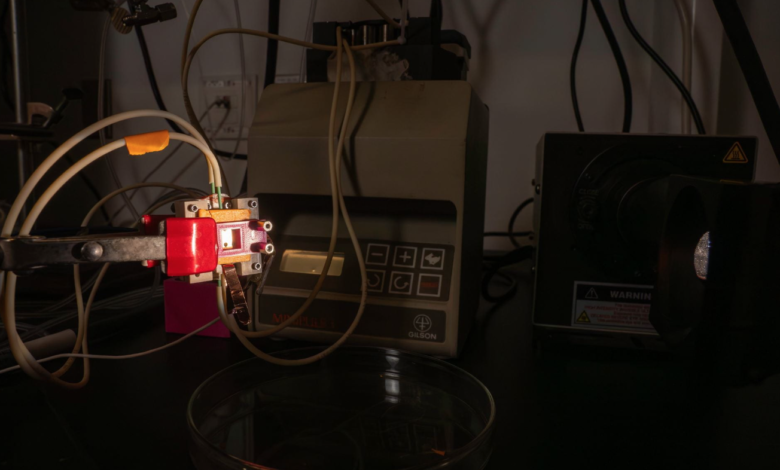
Produce 20.8% efficient solar hydrogen
(sustainabilityenvironment.com) – Producing solar hydrogen directly still represents a great challenge in terms of cost and performance. But it is a fascinating challenge and one on which the research sector does not intend to retreat. Unlike the traditional electrolytic approach, which requires an external current, the direct path is guided by sunlight; and the electrochemical cell, in which the water splitting reaction takes place necessarily requires extra components, from the photoabsorber.
More precisely, we speak of an integrated photoelectrochemical cell, a device capable of capturing light rays, converting them into electricity and using the latter to power the chemical reaction of H2O splitting. Despite several years of progress and studies, the technology behind solar hydrogen still appears hampered by low conversion efficiencies and the high cost of semiconductors.
A new photoelectrochemical cell with barrier
In detail, the chemical and biomolecular engineer Aditya Mohite and his colleagues converted a highly efficient solar cell into perovskite, a photoreactor capable of dividing water into oxygen and hydrogen. However, perovskites are extremely unstable in water and traditional coatings prevent them from functioning properly. That’s why the team designed an anti-corrosion barrier that isolates the semiconductor from water without hindering electron transfer.
“We realized we needed two layers for the barrier, one to block water and one to create good electrical contact between perovskite and protective layers,” explained researcher Austin Fehr, one of the main authors of the Fehr study. This achieved a conversion efficiency of 20.8% sun-H2.
Read also Solar hydrogen, a new thermochemical pathway for H2
“Our results represent the highest efficiency for photoelectrochemical cells without solar concentration and the best ever for those using halide perovskite semiconductors,” added Fehr. “It is the first time in a field historically dominated by prohibitive semiconductors and could represent the first real path towards the commercial feasibility for this type of device”. The new technology represents a significant step forward not only for the direct production of solar hydrogen, but also as a platform for a wide range of chemical reactions that use the sun to drive fuel synthesis. the research was published in Nature Communications.





